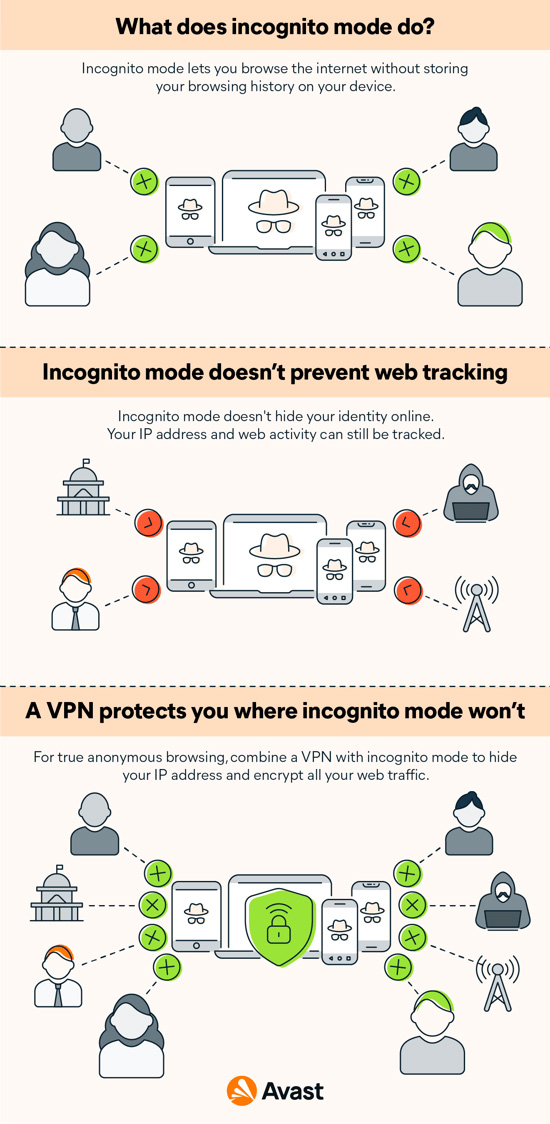Everyone has encountered a situation where they want to browse the internet without leaving any trace of their activity. This is where incognito mode comes in handy. Users have many questions, such as what exactly is incognito mode and how safe is it? In this article, we will address these questions and provide an understanding of how this feature works and its limitations.
Incognito Mode: A Basic Understanding
Incognito mode, also referred to as private browsing or InPrivate browsing, depending on the browser you use, is a feature found in most modern web browsers, including Google Chrome. Incognito mode allows users to surf the web without storing any information about their browsing history on their device. When using this mode, the browser does not save data like cookies, search history, form data, or temporary files.
How to Access Incognito Mode on Google
To access incognito mode on Google Chrome, follow these simple steps:
- Open the Google Chrome browser on your device.
- Click on the three-dot menu icon located at the top right corner of the browser window.
- Select “New incognito window” from the drop-down menu.
- A new window with a dark background and an incognito icon will appear, indicating you are now browsing in incognito mode.
Note that keyboard shortcuts can also be used to open a new incognito window quickly. On Windows, press Ctrl+Shift+N; on Mac, press Command+Shift+N.
What Incognito Mode Protects You From
When browsing in incognito mode, your online activities are less visible, offering several benefits:
- Local privacy: Incognito mode is useful when you want to keep your browsing history private from other users who share the same device. For instance, it can be helpful when searching for a surprise gift or looking up sensitive information on a shared computer.
- Cookie tracking prevention: Cookies are small text files stored on your device that help websites remember your preferences, login details, and more. In incognito mode, cookies are deleted once you close the window, preventing websites from tracking and remembering your activities in future sessions.
- Multiple accounts access: If you need to log in to multiple accounts on the same website concurrently, incognito mode allows you to do so without having to log out of your primary account in the regular browser window.
Limitations of Incognito Mode: Understanding Your Vulnerabilities
While incognito mode provides some level of privacy, it’s essential to understand its limitations and not overestimate the protection it offers. There are several areas where incognito mode falls short:
Your Internet Service Provider (ISP) Can Still See Your Browsing History
Even in incognito mode, your ISP can still track and store your browsing history. This means they have access to the websites you visit, the files you download, and any other online activity you engage in.
Websites Can Still Collect Data About You
Incognito mode does not make you invisible on the internet. Websites can still collect data about your visit, such as your IP address, which can be used to identify your general location, and the type of device and browser you are using.
Your Activities Can Be Monitored on Public or Work Networks
If you’re using a public Wi-Fi network or browsing the web at work, your activities can still be monitored by the network administrator, even in incognito mode. They have access to the same information that your ISP does, which means they can see the websites you visit and any files you download.
How to Increase Your Privacy and Security Online
While incognito mode offers some level of privacy, it’s not enough to ensure total anonymity and security on the internet. If you want to enhance your online privacy, consider adopting these additional measures:
- Use a virtual private network (VPN): A VPN encrypts your internet connection, protecting your browsing data from being tracked and collected by ISPs, network administrators, or other third parties.
- Enable browser extensions for privacy: There are various privacy-focused browser extensions available, such as ad-blockers, cookie blockers, and anti-tracking tools that can help protect you from invasive web tracking practices.
- Browse with a privacy-centric search engine: Instead of using popular search engines like Google, which track your search queries and display personalized ads, opt for privacy-friendly alternatives like DuckDuckGo.
In conclusion, incognito mode can provide an extra layer of privacy when browsing the web, but it’s essential to understand its limitations. To maximize your online safety, consider combining incognito mode with additional privacy tools such as VPNs and privacy-focused browser extensions.






